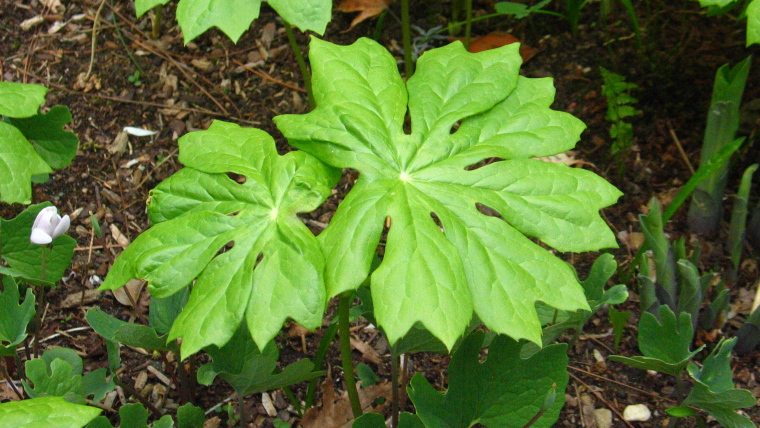
In a nutshell
Springtime biological activity in eastern forest plants in the U.S. is driven by different conditions: in general, temperature cues leaf-out in trees, and soil temperature and snowpack cue leaf-out in spring-flowering herbs. As a consequence, changing climate conditions may affect the phenology of these groups in different ways.
A research team based at the University of Ottawa used observations of leaf-out contributed to Nature’s Notebook from 965 sites across northeastern North America to explore how the timing of leaf-out among trees and understory herbs may be affected differently by changing temperature conditions. The team found that understory herbs are advancing leaf-out at a greater rate than trees, especially at higher latitudes. This more rapid advancement in leaf-out could result in a longer growing season and increased carbon uptake for these plants as temperatures increase.
What is special about this study?
This study was possible because of the rich set of leaf-out observations contributed to Nature’s Notebook over the past 13 years. A novel aspect of this study is that observations were assessed across a large region. As the authors indicate, our understanding of differential changes in phenology among plant functional types is limited because “we lack studies that examine phenological responses … over wide geographical areas.” The observations contributed to Nature’s Notebook directly address this gap, enabling discoveries like that reported in this manuscript.
What does this mean for YOU?
Every single observation you contribute to Nature’s Notebook adds to a growing data resource that is enabling scientific discoveries that otherwise would not be possible. You are directly supporting a growing understanding of plant response to changing climate conditions. Thank you!
Citation: Alecrim, E.F., R. Sargent, and J.R.K. Forrest. Higher latitude spring-flowering herbs advance their phenology more than trees with warming temperatures. Journal of Ecology. doi.org/10.1111/1365-2745.14023